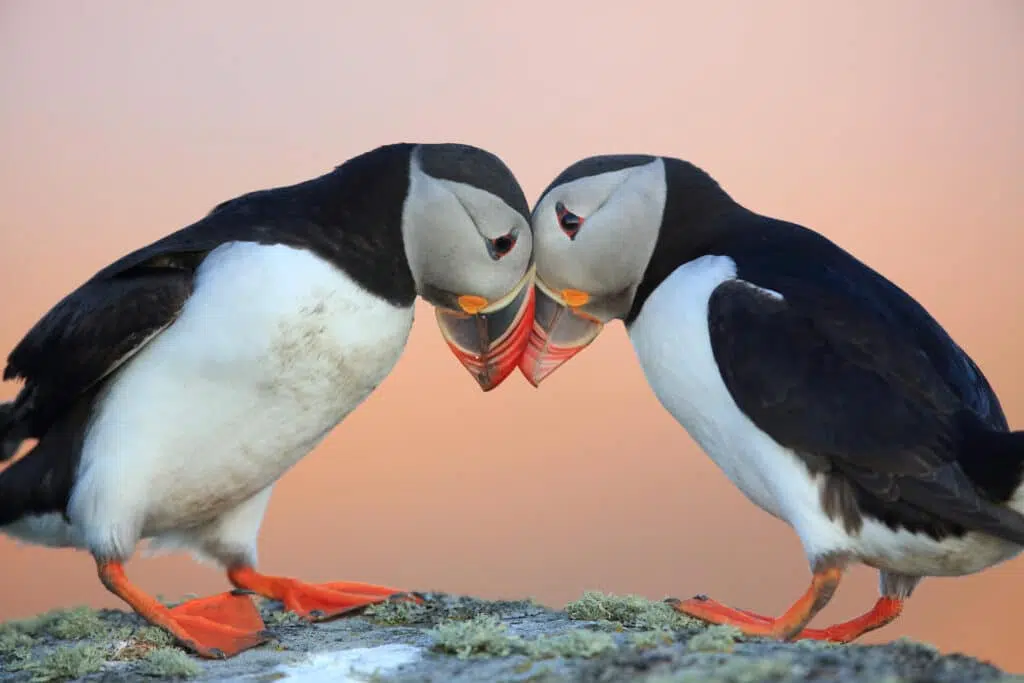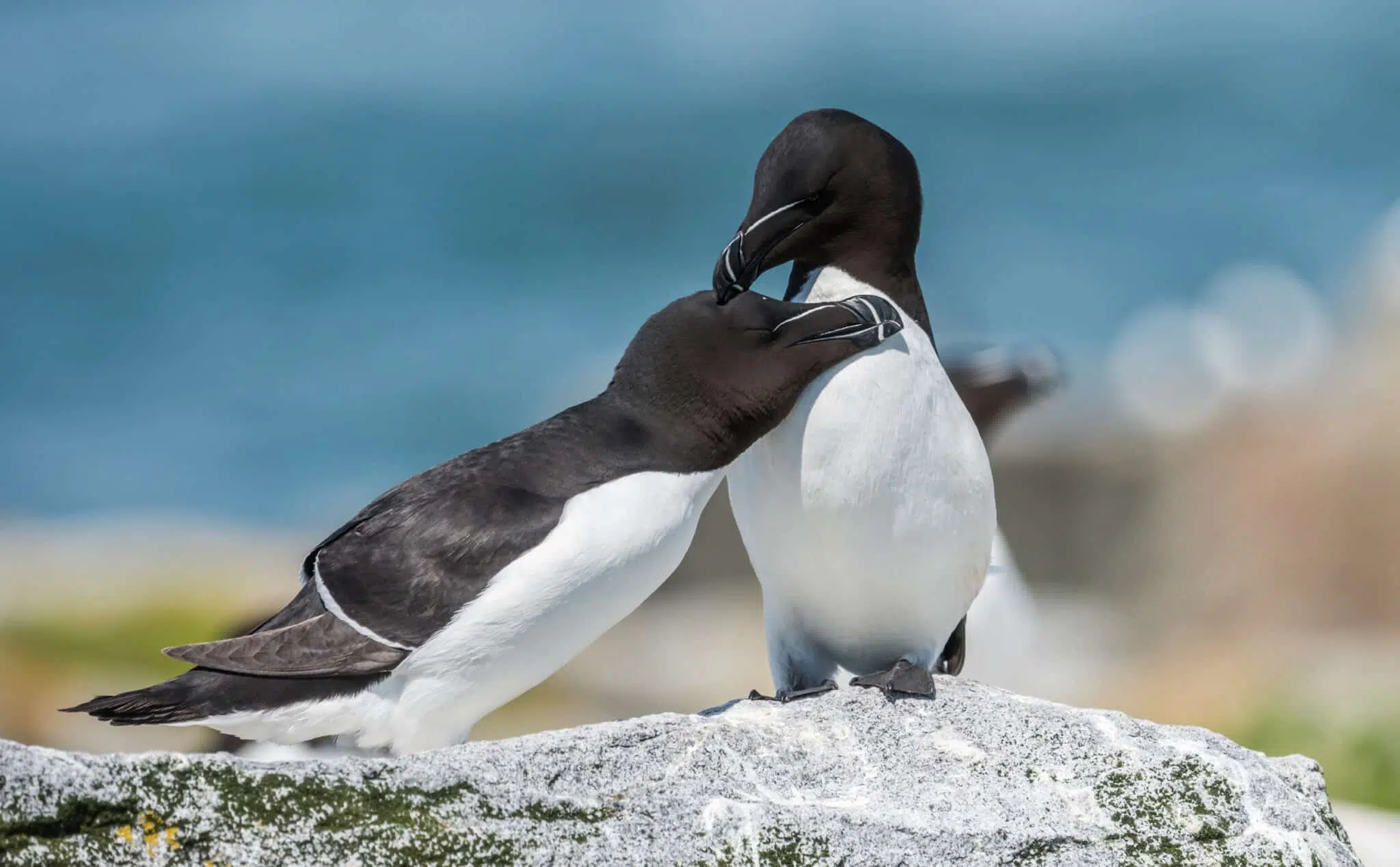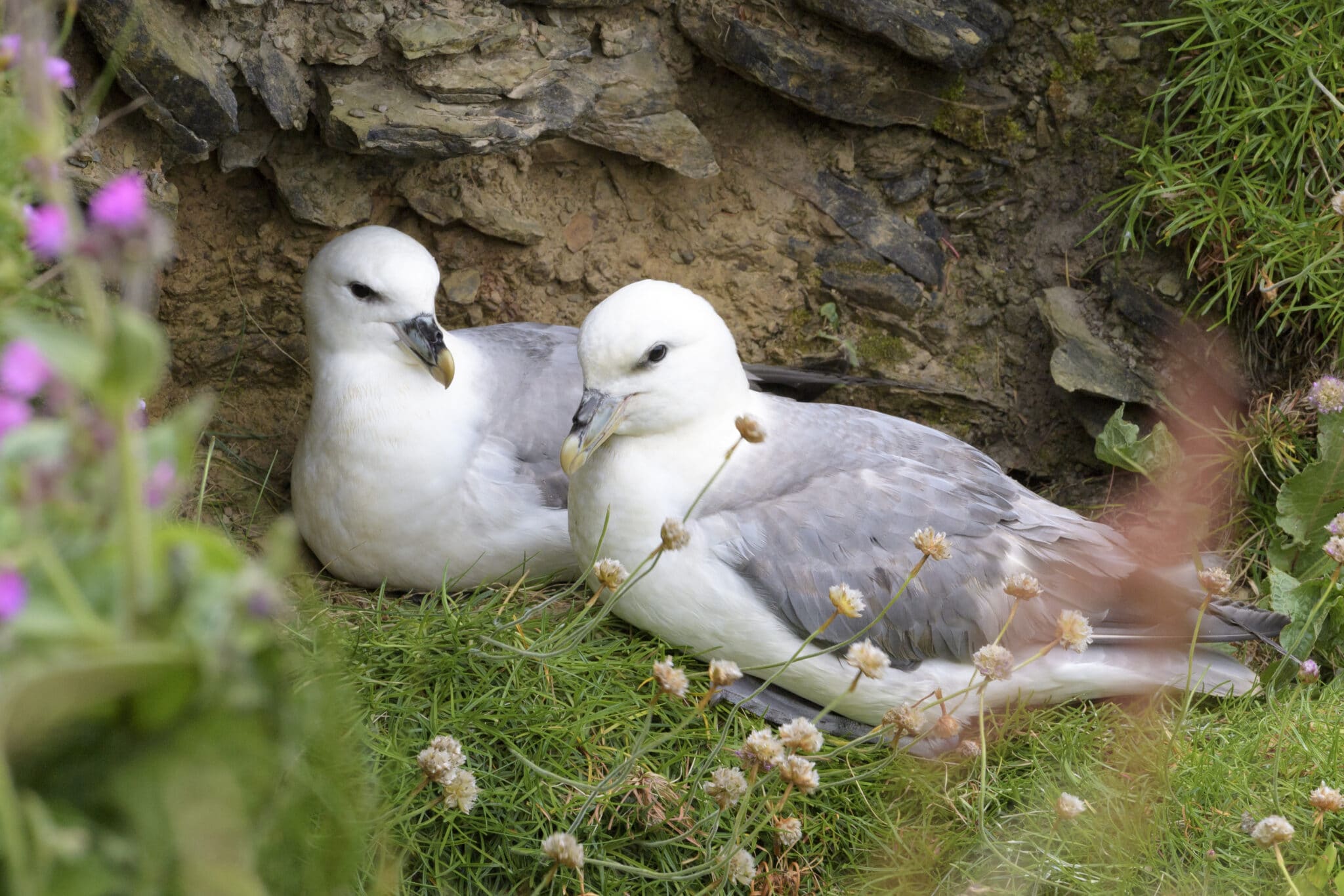Seabird of the month – Atlantic Puffin (Fratercula arctica)

While foraging, Atlantic Puffins can stay under water up to one minute and can dive as deep as 40 meters.
by Antonio Vulcano
IUCN status: Vulnerable (Global)/ Endangered (Europe)
Global population: 7,400,000 – 8,240,000 mature individuals with a decreasing population. In Europe, the population size is estimated to have decreased by 68% over the past 50 years.
Description:
Wingspan: 47 – 63 cm
Life span: over 20 years. The oldest Atlantic Puffin ever recorded was 36 years old.
Distinct features: Atlantic Puffins have a very distinctive beak. When viewed from the side, it is broad and triangular. Their carotenoid rich diet turns their bills and feet bright orange – but only during their breeding season! During winter, their bills and feet fade to duller shades. This seabird beats its wings rapidly and flies relatively high above the water. When diving, puffins use their wings to push them through the water and their feet as a rudder. This technique makes it look like they are flying under water!
Main prey: While they mostly prey on small fish, such as sand eels, herrings, hakes and capelins, occasionally, they might be spotted eating crustaceans and molluscs. While foraging, Atlantic Puffins can stay under water up to one minute and can dive as deep as 40 meters. They can catch several small fish in one dive, holding them in their beak while continuing to catch other fish. The average catch is around 10 fish per trip but the record in Britain is a whopping 62 fish at once!
Breeding
The European breeding population of Atlantic Puffins is estimated to be around 3,700,000 – 4,120,000 pairs. They breed on grassy slopes on steep sea cliffs, usually at the same colony where they themselves hatched. They gather in wide rafts and mate on the surface of the water. Puffins dig burrows on the ground or between rocks; where they build a soft nest of feathers and grass to incubate the usually single egg they lay. The eggs are laid in April in the more southern colonies and are incubated for approximately 40 days. They are colonial nesters, and they start to breed at the age of 4 or 5. They are mainly monogamous and both parents take care of the chick
Population distribution
The Atlantic Puffin is a bird of the colder waters of the North Atlantic Ocean. Its scientific name, Fratercula arctica means “little brother of the north” in Latin.
This seabird mainly breeds in Europe (Brittany Coast of France, Ireland, United Kingdom, Iceland, Greenland, Norway, Faroe Islands, and Northern Russia). Most of the world’s puffins are found in Iceland, where approximately 60%t of the population breeds. Important colonies are found on the West coast of Greenland, the North and West coasts of Norway, the Faroe Islands, the Shetlands, and Orkney Islands.
While at sea, the bird ranges widely across the North Atlantic Ocean, including the North Sea, and may enter the Arctic Circle. They often hunt in areas located 100 km or more offshore from their nesting sites, although when feeding their chicks, the birds usually venture out at smaller distance, if possible.
They winter from August to early spring on the open ocean far from land. They can go as far south as the Mediterranean Sea. Recent tracking data from birds breeding on the island of Skomer off the Pembrokeshire coast, showed that each individual followed a different route from other puffins and therefore travelled alone. Winter after winter, they repeat their own complex and unique movement patterns.
Young puffins possibly head out to sea without following their parents, going on their own explorations of the vast pelagic world. They then memorise that route and make that same solitary journey every winter.
Main threats
- Climate change
- Overfishing
- Marine pollution and oil spills
- Invasive predators
- Offshore energy constructions
- Bycatch
- Hunting for human consumption
BirdLife and the Atlantic Puffin
The RSPB ,our Partner from the United Kingdom, has through its Project Puffin asked the public to send photos of puffins with food in their bills, from any year and any colony. 1,085 members of the “Puffarazzi” submitted 3,497 fantastic photos, from 59 puffin colonies around the UK. The idea beyond the project was to investigate if puffins’ numbers have plummeted partly due to lack of food, and to find out how the fish puffins carry in their bills has changed over time.
Interesting facts
Puffins are great underwater dancers, circling around their prey to muster them, as shown in this video.
As shown in the video below, puffins need to perform long, extraordinary journeys to find food, and overfishing and climate change are making those trips all the more difficult, as their main prey is disappearing from our seas.
Atlantic Puffins can also be attacked by Arctic Skuas that will try steal their catch on their way back from their foraging journey.
Image credits: Atlantic Puffin (Fratercula arctica) by Frank Fichtmueller
You might also be interested in:
 | Stichting BirdLife Europe gratefully acknowledges financial support from the European Commission. All content and opinions expressed on these pages are solely those of Stichting BirdLife Europe. The European Commission is not responsible for any use that may be made of the information it contains. |









